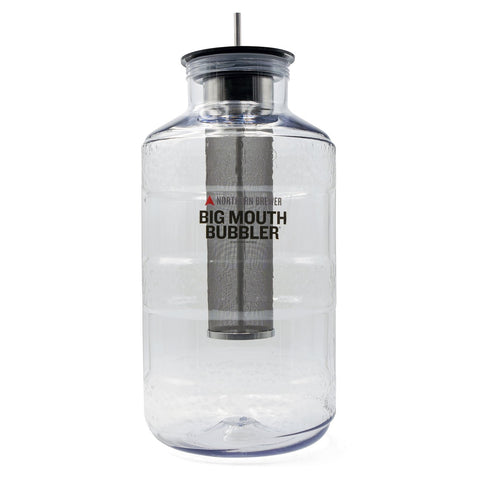
Dry hopping is the process of adding hops, usually in secondary, to a beer to add more of a hop aroma to your beer. Traditionally, dry hopping is done in beer styles like pale ales and I.P.A.’s, but people are utilizing this process in many other styles as well. Since you are not boiling the hops, you won’t be extracting any of the oils from them, and therefore will not be contributing to the beer’s bitterness. What you will be adding are hop flavor and aroma. Seeing that almost 75% of human taste comes from smell, then you can see why people take this extra step with their beers. If you are a big hop fan, dry hopping is a must.
There are a few different thoughts on how to dry hop, so we’ll leave it up to you on which way you think gives you the best results. The way that we prefer is to add the hops with 3-5 days left before you plan on bottling, or kegging, the beer. The reason for this is because the idea is to have the hop aroma infuse with the beer without having the aroma fade. By adding the hops only a few days before bottling, you get the freshest hop aroma throughout your beer without much loss of taste.
Another method is to add the hops to the secondary 2 weeks prior to bottling. This allows the hops enough time to blend with the beer well. We tend to feel that you lose some of the hop aroma with this much time, but you do get a better blend.
Dry Hopping Tips & Tricks
We are often asked, what type of hops are the best for dry hopping? Most of us prefer the use of leaf hops, as they are easier to deal with when you transfer, but pellet hops will work as well. As far as the type of hop itself, that is up to you. Most brewers will use the same type of hops that they used in making the beer, usually those used for aroma in the recipe. You might want to buy an extra ounce, or two, of either the aroma or bittering hops that you used to make the beer.
Be careful of the quantity of hops that you use because you can easily overpower a beer by using too much. Usually, an ounce or two is all you need. Start with one ounce, and then see if you need to add more the next time.
Another question that we get is how do I add the hops to a carboy? Most of us are going to use a funnel and pour them right into our secondary. You cannot use a hop bag as the hops are going to absorb liquid while in the carboy and expand. It is very difficult to get the bag back out of your carboy when the hops are all swollen from liquid, and most of the hops will settle out anyway.
If you don’t want to deal with the mess of adding hops directly to your carboy then we do have a product that will work well for you. The Big Mouth Bubbler Depth Charge is compatible with our large-mouthed carboys, so it's easy to insert and remove. We would recommend using pellet hops with this unit because you can get more hops into it that way, but leaf hops will work as well.
Give dry hopping a try as you will love the results. It isn’t hard, it doesn’t take that much time, and you get that little something extra in you beer that might have been missing before.
To begin or continue your homebrewing education, check out Northern Brewer University for our Homebrew Video Courses.

